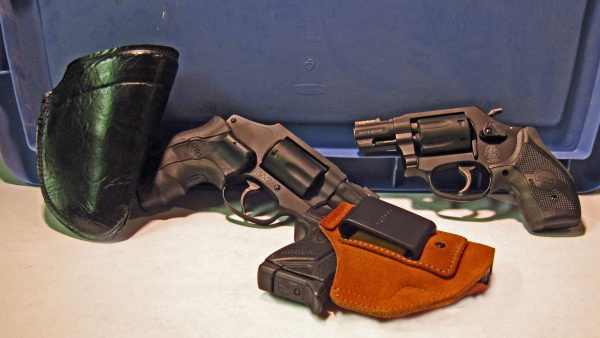
Editor’s Note: As we’re heading to hiatus after the Thursday issue, it’s relevant to advise of an update to Paul Kirchner’s book, Jim Cirillo's Tales of the Stakeout Squad.

This is a newly revised and expanded edition of the book originally published in 2008. Author Paul Kirchner has added additional information and photographs, so the revised edition is 30% longer than the original at 228 pages. Jim Cirillo wrote about some of his experiences in "Guns, Bullets, and Gunfights," published in 1996, but Kirchner drew out many additional stories from Cirillo in extensive interviews. He also interviewed other members of the unit, including Bill Allard, who provided many additional accounts and background.
Some years back, we began a trip down the road of ‘belt-less’ concealed carry in response to a reader email. Once started, we got requests for information from people who work ‘in scrubs’ and people who, pre-COVID, worked in a business environment with no cover garment in business attire or ‘business casual.’
It was something I had interest in for personal reasons. For one thing, when I moved into detectives in 2000, the ‘uniform’ was business casual. That meant most wore chinos and a polo shirt. During the times of the year when weather was favorable, they wandered about either disarmed or with a holstered sidearm and a badge clipped to the belt – in plain view.
This being before our state had ‘shall issue,’ there was no talk of ‘open carry.’ I still considered it indiscreet. I’d wear a light jacket, an ‘over-shirt’ or a vest – please, spare me the “shoot-me-first” comments; unlike you, I actually moved about armed in public then – and for the 23 years previous to that.
Still, there was a potential need for ‘shirtsleeves’ concealed carry and I started down that road then. Moving into Narcotics within about a year, I still found that a necessary skill.
Another reason I came to be interested in extreme concealed carry was an age-related medical event. This required my attendance at a range of medical appointments, some hospitalization and post-care rehabilitation. While there were no legal constraints, I was concerned to keep the piece secure from prying hands and didn’t want to unduly alarm medical professionals who were doing a superb job in seeing to my care.
Coincidentally, I’d seen some online silliness about sub-optimum extreme concealment methods. Some were propagated by a correspondent who admitted using techniques along this line while attending potential mass casualty events (public gatherings) at which security was employed to keep armed citizens at bay.
Another ran a video segment where someone was using a less-than-rigid pouch to hold a handgun. Seeking to reholster the pistol while wearing the floppy holster, the object of the exercise contrived to shoot himself.
That, as our friend Claude Werner would note, is a negative outcome.
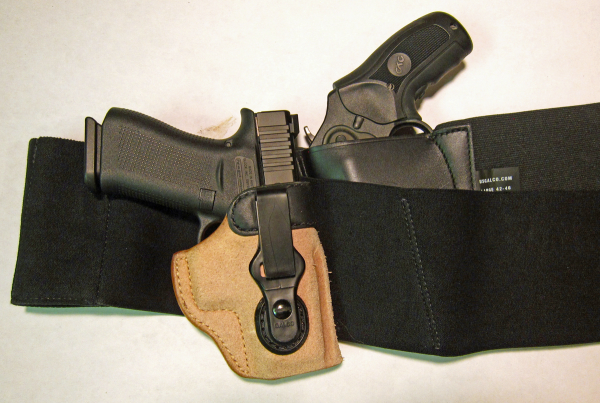
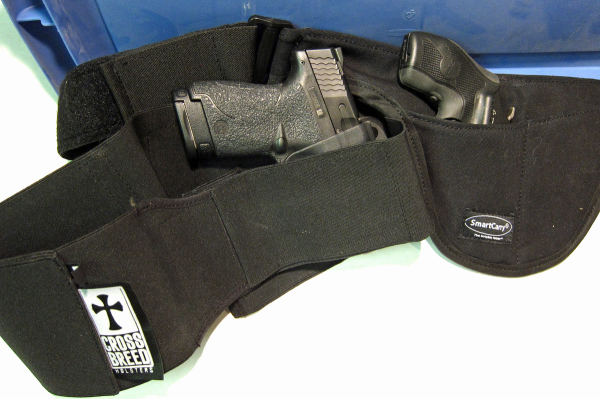
What I’ll do is list some gear and links for you to look for yourself. The rigs are suitable for hiding more than for repetitive holster drills; that happens. You don’t get something for nothing. Sometimes you don’t get a complete firing grip on the piece. In an environment in which a surreptitious draw is better, such rigs work fine. In any event, they allow you to have a gun when otherwise you would not.
To start with, I make considerable use of the TecGrip holster from Blackhawk. Available both as an inside-the-waist version (linked) and pocket version, I often use both in a big enough pocket. The ancient 5.11 trousers I wear around the property often holds that holster with a GLOCK 19, with a spare mag in the trouser magazine pocket. I also use it to transport the gun and keep it accessible within the house at night. It is loose enough that one could contrive to touch the trigger – but you can recognize that issue and not do it.
I’ve also used, over the past year and a half, the MAINSTAY Hybrid IWB/Pocket Holster from Elite Survival Systems. Another take on the “sticky outside, slick inside” holster, like the TecGrip, the holster stays in the pocket when the gun comes out. Also similar, one removes the holster from the pocket to ‘reholster,’ putting both back in the pocket together.
In the “belly-band/apron-style holsters” field we have Smart Carry, Elite Survival’s “Crotch Pocket Holster,” the Galco UnderWraps Belly Band and the CrossBreed Modular Belly Band.
The Smart Carry and Elite “Crotch Pocket Holster” are a pair of below the waist in the trousers efforts, like an apron worn under clothing. For extreme discreet concealment, people have carried larger guns than would seem sensible – likely for ‘proof of concept.’ The Elite version is constructed of soft, breathable synthetic mesh fabric, has a water resistant layer to protect the firearm from perspiration and is available in three firearm sizes to fit most pistols.
The SmartCarry uses a special barrier fabric called Cushmax in the construction of the holster. The comfortable elastic waistband fully supports the weight of your gun so your pants don’t have to. With the new strap/loop design there is no exposed hook velcro.
Obviously, reholstering is an issue. Not having a gun at all can be vastly worse.
As to the belly-band options, I’ve tried the UnderWraps by Galco and the Modular Belly Band by CrossBreed. The Modular is just what it sounds like, the belt unit accompanied by a kydex pouch that’s covered front and back. I wear the belly band at the waistline, like an IWB rig instead of higher, as some may do.
I’d been using the UnderWraps under ‘lounging’ or ‘sweat-‘type pants for various medical appointments as well as around the property (for walking the dog, etc.). I find that the S&W M&P340 in the ‘cross draw’ position and the Ruger LCRx in the ‘strong side’ pouch balances nicely.
Why the S&W cross draw and Ruger in the strong side? No reason, except that my ‘light duty’ roll-out has been the S&W in the Galco Hornet and the Ruger in the DeSantis Speed Scabbard . . . just commonality with belt carry in the short term.
As to the CrossBreed effort, while it’s somewhat thicker, it has the unquestioned advantage: it’s the only rig in the lineup that allows reholstering. It’s a solid effort and the pouch can be placed on other CrossBreed platforms for versatility.
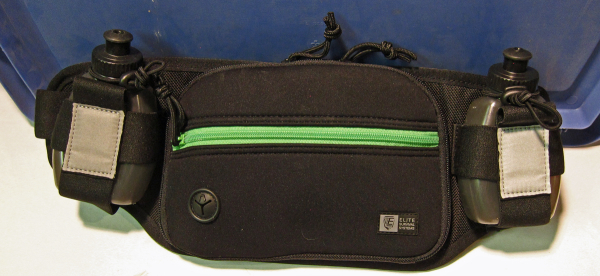
If you seek extreme concealment while running – and don’t mind people being able to see how even if they can’t tell what, check out the Elite Survival Systems Marathon GunPack. It’s a concealment hydration belt, with a pair of 7 ounce water bottles, dual bilateral rip cords for quick access to the firearm and a cellphone pocket. It’s an interesting rig and worthwhile for some medical rehab – if you’re legal to carry there.
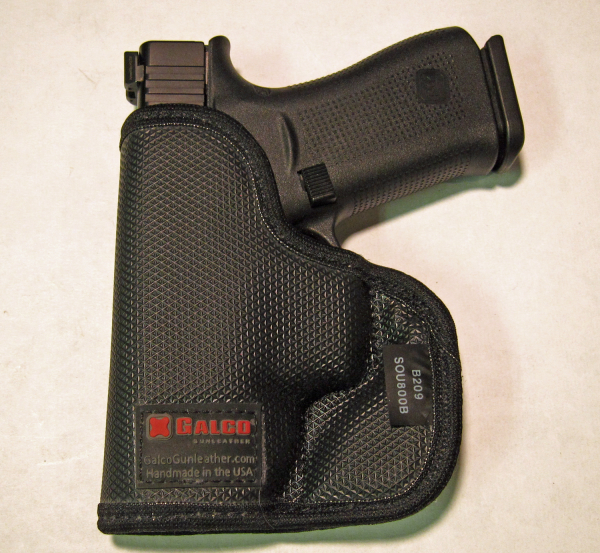
For clipping into a waistband, the Galco Stow-N-Go Clip-On IWB holster is very handy for ultra-lite guns. I’ve discussed it before here. It more than proved its worth in that limited situation and is a very handy option.
The same maker’s Scout 3.0 Strongside/Crossdraw IWB Holster for a GLOCK 43x is better for belt wear and the STUKON-U Pocket Holster is great to pack that same gun around the property or for a quick run to town.
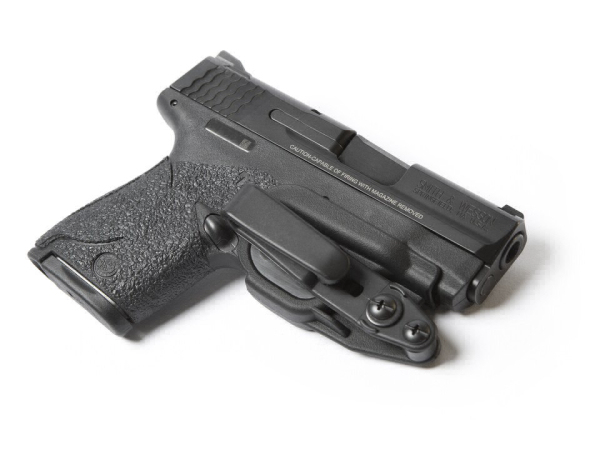
A standard for some years for many users was the “trigger guard cover” design now perfected as the Vanguard 2 Holster by Raven Concealment. I’ve not used it but I’m told it’s a superb answer to a tricky question: carrying a full-sized heater with minimum bulk-adding support gear for extreme inconspicuous carry. Like its predecessor, the VG2 covers only the trigger guard of the pistol.
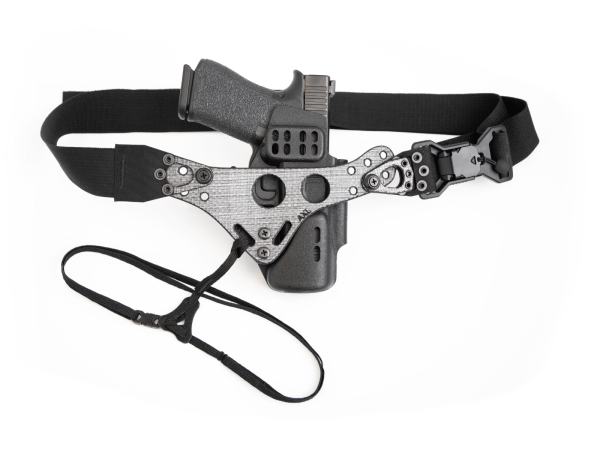
Finally, PHLster has announced the Enigma, a “concealment chassis.” Not a belt holster, belly band – or anything else – it’s a foundation to apply your own holster, a ModWing, Darkwing, Raven wing, or similar AIWB holster with concealment claw/wing attachments that have the 5/8ths hole spacing. It’s attached by a Fidlock magnetic quick release buckle – though you could substitute your own – and it has a “leg-leash,” an adjustable tie-down to keep the holster in place through repeated draw cycles.
As it’s a chassis for attaching a rigid kydex IWB, you have the advantages attendant to a regular concealed carry service holster with the ability to get a firing grip on the piece and to reholster safely. It’s optimized for the rightly popular PHLster Pro Series, but it’s a modular set up within some limits.
We’re blessed with a range of great concealment products, readily available. Know the limitations on the rigs you intend to use and think through the process. Don’t stuff a pistol into a loose bag that’s restrained by your belt; remove the holster, replace the gun, put both in the trousers. If that’s a deal-breaker, get one of the rigid options or go without a gun.
Merry Christmas to you all and I’ll be reviewing Paul Kirchner’s new book in January for the Tactical Wire.
-- Rich Grassi